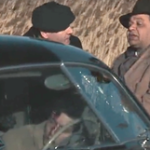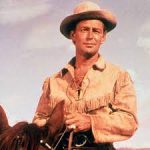
Photo by Melissa via Pixabay
My wife Anne tells me often how amazed she is that I can recall scenes from movies, and the dialogue that goes with them, as easily as I do. I sometimes counter with how easily she can identify a couple bars of a classical music piece and know what key signature it’s done in.
Good films can imitate life so well that we can discern and assess the values they convey.
To me, there is no difference between what I do and what she does. We are both reacting to art that has inspired us to the point of remembering it down to its tiny details.
The art of abstracting
But I like to do more than remember scenes and dialogue from films, I look for ways to abstract from them to real life. It seems natural to match those artistic renderings to actual lifescenes that I find myself confronting and or/see others living through. When I find those parallels, I often relate a movie scene to it.
For one thing, it helps me feel that others have faced such situations and survived. Even if it did happen in the movies.
When my brain’s amygdala alerts me to a dangerously familiar situation, I start thinking about the movie Jaws II, when Sheriff Martin Brody warns the doubting mayor of Amity that he has another shark problem on his hands. The veteran shark killer goes eyeball to eyeball with the mayor and explodes, “I’ve seen a shark up close, and you’d better do something about this one because I don’t intend to go through that hell again!”
And, of course, that’s exactly what Brody winds up doing.
Pain avoidance
Most of us have had our own version of shark moments in the past which have probably produced a certain level of PTSD. And we find Brody’s fiery warning fits how much we want to avoid any such future hell. We become one with the good sheriff of Amity.
Another example is the following.
Sometimes when she tells me that a situation dictates I do something unpleasant (which I may bristle at, even though I was actually planning to do anyway), I remember a scene from Shane. It’s where farmer Joe Starrett (Van Heflin) mistakes a drifting Shane (Alan Ladd) as an adversary and tells him to get off his land.
Shane balks a moment and Starrett asks, “What’s the difference? You’re leaving anyway.” To which Shane replies, “I’d like it to be my idea.”
Invoking the arts
These are but two of dozens of times I’ve invoked scenes and dialogues from films to point out the parallels between art and daily life, and how these films may show us what is undergirding the words and actions of real-life people in real-life conflicts.
To me, the entertainment aspect of good films is only part of their value. Like anyone else, I can easily be persuaded to spend 20 bucks to go see what promises to be an exciting story unfold on the big screen. But the added value of many such movies is the roadmap they can provide for similar situations we may encounter myself in real life.
When I taught ethics at the university level, I often assigned students the task of finding films that illustrated the ethical principles we were discussing, and to show those clips and explain their relevance in class.
I would explain that storytelling in films (like all good art) can be a kind of dress rehearsal for life.
In her book, Seeking Goodness and Beauty,” editor Patricia Lamoureux writes her first chapter on “The Formative Power of Story.” She explains that arts can help us see morality and ethics directly and indirectly. They can bring us to Tolstoy’s nagging question, “What then must we do?”
Familiar question
Incidentally, that same question is uttered by the character Billy Kwan (Linda Hunt playing a man) in the film, The Year of Living Dangerously. Kwan is desperately trying to show journalist Guy Hamilton (a young Mel Gibson) why he needs to focus on the oppressed people in Jakarta rather than on the politicians in the palace.
Lamoureux explains that the arts can invite us to reflect on how we are forming ourselves in the midst of cultural pressures that are also trying to form us. In Hamilton’s case, he was fighting the peer pressure of other journalists who saw Indonesia’s problems as just another political conflict and not a situation in which people were starving and dying.
A tour guide
If we let them, the arts can work as a tour guide through life’s thorny and treacherous paths, and they can do it on three levels: through our perception of how the film or literary characters are behaving, through imaginative identification with these characters, and through the level of discernment where we ask ourselves if they are doing the right thing or not. And, if not, how should they — indeed, how should I — do it?
Values and cannoli
I would add that a good writer can show us — sometimes in a humorous way —  how we prioritize things strangely in life, including life itself. And here I go again with a parallel from a movie, in this case the quote-laden film, The Godfather.
how we prioritize things strangely in life, including life itself. And here I go again with a parallel from a movie, in this case the quote-laden film, The Godfather.
i’m thinking of the scene where Paulie is assassinated in his car and gangster Peter Clemenza, who set it up, tells the killer Rocco, “Leave the gun. Take the cannoli.”
Of course, the scene also shows how whacked out we can let our priorities get.
I am a writer, college professor, and author of several nonfiction books, including three on the decade of the 1960s. Several wonderful essays of gifted Retrospect authors appear in my book, "Daily Life in the 1960s."






Thanx Jim for your thoughtful story on the connection between film and life.
I always look for that connection in literature too.
To paraphrase a relevant quote by James Atlas, the writer and anthologist, about biography/non-fiction and fiction –
A well-written biography tells a story, a well-written novel tells the truth.
I love the Atlas quote, Dana, and I agree, with one caveat: I have read some very moving non-fiction books, as I’m sure you have. But fiction can go beyond where non-fiction sometimes can’t in moving beyond the facts, to the tapestry of truth a collection of facts can signify. Thanks for responding!
Yes Jim, and fictional characters must reflect human nature in action and dialog., and good writers make that happen!
Yes they do!
I love this essay, Jim, as my husband and I are both film nuts (and I am sitting a stone’s throw away from “Amity Town Hall” – where the original “Jaws” was shot, and is shown once a week in the summer; I confess I never saw “Jaws II”).
I no longer have the facility to remember exact movie quotes the way that you do, but I love the examples you gave and how they relate to you in real life. Those are wonderful lessons to learn from, just as I love the quote from Lamoureux, harkening back to Tolstoy, “What then must we do?” Excellent moral lesson, particularly in today’s landscape.
Thank you, Betsy! I love good films, too. I didn’t know there was a real Amity Town Hall! When I lived in Boston, we gravitated north to Maine and Vermont rather than south to the Cape and MV. I did wind up at a mafia wedding there once, though!
What a thoughtful and comprehensive piece, Jim. Not that I would expect any less! I think the dramatic arts in particular, with the linear movement of most narratives, can serve as guides for us to learn how to move through the world and how NOT to move through it. Certainly the morality films you mention earlier, SHANE and — yes — JAWS offer much in the way of models, not only of character but of thought and action. And I will never forget that scene in Year of Living Dangerously in which Billy Kwan, driven mad by the poverty and cruelty he is witnessing, pounds away at his typewriter “What is to be done? What is to be done? What is to be done?” Thanks for your deep thoughts, Jim.
Thank you, Charlie. Sometimes I let movies and plays become TOO real to me. I identify easily with carefully etched characters.
You clearly have a gift for recalling movies–I only remember a couple of lines, but those that stick, really do. It shows how important writers are. Movies that challenge us, speak truths, and/or combine humor with the human condition require skilled writers (along with editors and directors and actors). Art reflects life and provides insights–film can definitely be art.
Thanks, Khati. My wife Anne says she wishes I’d remember what she says as much as I remember movie lines!
Love this essay Jim. Films take us on different voyages. Sometimes they reflect who we are, or who we wish to be. Our favorite characters stir feelings deep inside of us in their classic portrayals of life. Sometimes we relate and see ourselves as them, oftentimes we see the opposite but are equally entranced. These are some of my favorite quotes. (I took out the cannoli) “The dude abides.” “Hello, my name is Inigo Montoya. You killed my father. Prepare to die” “Carpe Diem” “I am the danger. A guy opens his door and gets shot, and you think that of me? No! I am the one who knocks!”
Thanks, Patty! Who could forget Carpe diem?
Like you, I enjoy reflecting on what I have learned from movies. So many of them have touched and influenced me in profound ways. Thanks for reminding me that film art has shaped my thinking about many things.
Thanks, Laurie. I love plumbing good films to see what I can learn from them. What I remember more than plots are the deeply-etched characters and the chemistry between them.
I am another person who has a lot of trouble remembering the details of movies. The ones I do remember tend to be humorous, like “I’m being chased by Guido the killer pimp!” or “I think what we have here is a dead shark.” And the cannoli quote, which I have based many a joke upon.
One that has on occasion given me solace in dark times is from “It’s a Wonderful Life.” It’s Clarence’s inscription in his copy of “Tom Sawyer” that he leaves for George. “Remember, NO man is a failure who has FRIENDS.”